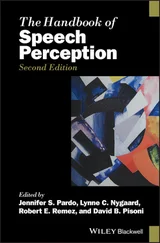Researchers have used EEG‐based data to derive asymmetries of frontal brain activity and the frontal activation motivational model as a theoretical platform to test hypotheses related to individual differences in temperament (including shyness and related constructs) and affective style across development (see Schmidt & Miskovic, 2014, for a review). Typically, these studies examined frontal asymmetry as the difference in EEG alpha power in the right frontal hemisphere minus EEG alpha power in the left frontal hemisphere. Because EEG alpha power is inversely related to cortical activity, negative scores reflect greater relative right frontal brain activity (Tomarken et al., 1992).
During different developmental periods, researchers have provided support for the relation between right frontal asymmetry and social avoidance‐related tendencies. For example, in infants and children, resting right frontal asymmetry has been associated with behavioral inhibition and emotional reactivity (Calkins et al., 1996; Davidson & Fox, 1989; Fox & Davidson, 1987; McManis et al., 2002), which are the temperamental antecedents of shyness. In preschool children, those described as socially inhibited and withdrawn during interactions with peers show right frontal asymmetry at rest (Fox et al., 1996), as do temperamentally shy children (Poole et al., 2018, 2019; Theall‐Honey & Schmidt, 2006). In adults, higher levels of behavioral inhibition, shyness, and social anxiety also have been linked to right frontal asymmetry at rest (Moscovitch et al., 2011; Schmidt, 1999; Sutton & Davidson, 1997) and increases in right frontal brain activity in responses to social stress in adults (Davidson, et al., 2000) and children (Schmidt et al., 1999).
Adaptive Subtypes of Shyness in the Brain
An additional line of our research has been to examine the neural substrates of different subtypes of shyness in children that are presumed to have different adaptive functions. As mentioned earlier in the first section, we have been particularly interested in different subtypes of shyness that share conceptual overlap, such as fearful/nonpositive shyness and self‐conscious/positive shyness, as they appear to have different adaptive functions. We have recently explored each of these two different conceptualizations of shyness in two separate studies to determine whether we could distinguish them on resting brain‐based measures.
In Study 1, we classified children with early‐developing (fearful) shyness and a later‐developing (self‐conscious) shyness. We found that children with later‐developing shyness had the highest relative salivary cortisol response (a measure of stress reactivity; Schulkin et al., 2005) in the context of self‐presentation, the highest levels of embarrassment, and the lowest social skills according to parent‐ and teacher‐report, whereas children with early‐developing shyness displayed the highest relative resting right frontal brain asymmetry (a neural correlate of fear and avoidance) relative to the other groups (Poole & Schmidt, 2019c). In line with Buss’ (1986a,b) hypotheses, this provides partial support that early‐developing shyness may be maintained by a sensitivity toward experiencing fear, whereas later‐developing shyness may be more closely related to self‐conscious emotions.
In Study 2, we examined resting state EEG measures in children with positive shyness, nonpositive shyness, and low overall shyness. We operationalized positive shyness as the display of shy behavior (e.g., avoidance) and positive affect (e.g., smiling), whereas nonpositive shyness is the display of shy behavior without positive affect (Poole & Schmidt, 2019a, 2020a). As mentioned above, positive shyness has been regarded as an adaptive, approach‐dominant subtype of shyness (see Poole & Schmidt, 2020b, for a recent review).
Similar to Study 1, we first examined resting state frontal EEG asymmetry among children classified as positive shy, nonpositive shy, and low shy (Poole & Schmidt, 2020a). Our results revealed that children classified as nonpositive shy displayed greater relative resting right frontal EEG activity, whereas children classified as positive shy and low shy displayed greater relative resting left frontal EEG activity (a neural correlate of approach). These findings converge with studies that have examined psychosocial correlates of approach‐avoidance in these subtypes, extending this work to a neural measure. It may be the case that children who display more positive shyness exhibit an underlying biological diathesis for approach as reflected by greater relative left frontal brain activity at rest, which could facilitate approach behaviors in social situations and yield the benefits of such social interactions, including social engagement and competence.
In Study 2, we also examined frontal EEG delta‐beta correlation among these shyness subtypes (Poole & Schmidt, 2020a). Delta‐beta correlation is thought to reflect the efforts of regulatory networks to down regulate arousal in the subcortical networks (Knyazev & Slobodskaya, 2003; Schutter & Knyazev, 2012) and thus some researchers have conceptualized delta‐beta correlation as a proxy for adaptive emotion regulatory abilities. Our results revealed a relatively higher frontal delta‐beta correlation among the positive shy children compared to the nonpositive shy and low shy children (Poole & Schmidt, 2020a). As stated above, positive shyness is hypothesized to emerge from the simultaneous feelings of arousal and regulation in social situations (Colonnesi et al., 2014; Colonnesi et al., 2017; Nikolić et al., 2016; Poole & Schmidt, 2019a), and thus it is possible that the positive shy children display greater synchrony of delta and beta oscillations as reflected by stronger delta‐beta correlation due to their efforts to regulate feelings of arousal.
Frontal Brain Maturation and Adaptive Shyness
In order to further understand the adaptive function of shyness, we recently have begun to investigate whether frontal brain maturation may be related to shyness in childhood given that the frontal cortex is involved in the regulation of behavior (Fox, 1994; Passler et al., 1985) and delays in frontal maturation have been linked to a range of childhood behavioral and regulatory problems (e.g., Dawson & Fischer, 1994). One way to measure frontal brain maturation is to examine the development of EEG spectral power (Thatcher, 1991). The development of spectral power in faster frequencies (e.g., alpha) is thought to reflect increased brain maturation of the cerebral cortex, and increases in EEG power in these faster frequencies have been related to regulatory functions (Bell & Wolfe, 2007; Clarke et al., 2001). In infants and young children, there is more spectral EEG power at slower frequencies (e.g., delta) relative to faster frequencies in absolute terms and, with age, delta occupies less power, whereas alpha occupies more power in the overall power spectrum (Clarke et al., 2001; Marshall et al., 2002). Accordingly, increases in the ratio of alpha to delta power (i.e., alpha/delta ratio [ADR]) may reflect an increase in the proportion of alpha to delta power and a proxy of brain maturation.
Using this idea as a guiding framework, we have examined the ADR score in relation to shyness during early (Schmidt & Poole, 2018) and late (Schmidt & Poole, 2020b) childhood in three separate studies. In Study 1 (Schmidt & Poole, 2018), six‐year‐old children had resting state EEG collected across four repeated assessments separated by approximately six months. We examined how maternal‐reported shyness predicted the trajectory of ADR across the repeated assessments spanning age six to eight years. We found that low shy and high shy children exhibited a similar ADR ratio score at enrollment. However, we found that low shy exhibited the expected linear increases in ADR across visits, whereas high shy children failed to show significant increases in ADR across visits.
Читать дальше




![О Генри - Справочник Гименея [The Handbook of Hymen]](/books/407356/o-genri-spravochnik-gimeneya-the-handbook-of-hymen-thumb.webp)







